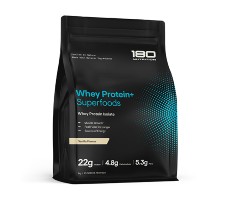//
As the modern obesity epidemic escalates, medical researchers have discovered your body shape and body composition are much more important than your body weight. How much fat your body harbours and where it lies are critical factors influencing health.
WHAT IS FAT?
Body fat, or as doctors call it adipose tissue, is body tissue composed mainly of fat cells known as adipocytes. The main role of body fat is to store extra energy in the form of substances called lipids, but it also serves to cushion the body and acts as insulation to reduce heat loss. Far from being chemically inert, adipose tissue has, in recent times, been recognised as a very active organ in its own right.
In humans, adipose tissue is located beneath the skin (subcutaneous fat), around internal organs (visceral fat), in bone marrow (yellow bone marrow) and in breast tissue. The visceral or intra-abdominal fat is located inside the abdominal cavity, packed in between organs (stomach, liver, intestines, and kidneys) and is different than subcutaneous fat underneath the skin.
ABDOMINAL FAT
Although we all have our own unique shapes, there is one area where the accumulation of excess fat is a medical disaster: around the waistline. Doctors call this fat truncal, abdominal, visceral or organ fat. Excess truncal fat is referred to as abdominal or central obesity. Abdominal fat has been found to produce a long list of powerful chemicals including several hormones that can create problems. For example, the more belly fat a man sports, the lower his level of the male hormone testosterone falls while his production of the female hormone oestrogen rises. This will seriously impair his health and sexual function.
Young women tend to store fat in the buttocks, thighs and hips while men are more likely to have fat stored in the belly due to differences in sex hormones. However, when women reach menopause and hormonal production declines, fat migrates from their buttocks, hips and thighs up to their waists.
All the evidence points to truncal obesity as the most dangerous type of obesity. Men with a waist measurement greater than 39 inches, and women whose waists are more than 34 inches, have a 500 per cent increased risk of diabetes, high blood pressure, heart disease, cancer and a long list of other diseases including circulatory disorders, stroke, disturbances of blood cholesterol and triglycerides, hormonal imbalance and inflammatory diseases, to name just a few. In a real way, too much fat around your waist may shorten your life in a haste.
Epicardial adipose tissue is a particular form of visceral fat deposited around the heart. It is a very active and dangerous type of fat that produces various chemicals that might negatively affect heart function.
MEASURE YOUR BODY FAT
Modern technology now allows us to easily measure an individual’s body composition. Using a bio-impedance body scanner in my office, I can determine your actual as well as your ideal body weight, your lean body mass (non-fat weight) as well as your visceral fat level. Even more amazing, the machine gives a read out of your body’s biological age in contrast to your actual chronological age. This helps to provide an objective and realistic evaluation of your overall health.
Using this tool, we frequently find that even underweight individuals can have excess visceral fat and are at increased risk of disease. Fortunately, the solution to excess truncal fat is simple and effective.
Personalise your programme: Having measured your body composition we can use this information to create a customised weight management programme, as one size does not always fit all.
Plan your protein: Your lean body mass will indicate exactly the amount of protein you will need to consume each day in order to lose belly fat but maintain your muscles and lean tissues.
The plan guides you in using healthy, convenient and economical protein foods to achieve your goal. Delicious soy protein based shakes make it easy to personalise your protein intake. Extensive research has demonstrated that properly designed meal replacement shakes are extremely safe and effective for fat loss.
Prioritise fruits and vegetables: Health authorities worldwide now recommend that we consume large amounts of vegetables and fruit. For optimal health, men should aim to eat nine and women seven servings of fruit and vegetables each day. Medical research continues to demonstrate that plants, especially fruit and vegetables, contain a large number of health enhancing substances and are useful for healthy weight loss. However it is important to avoid fruit with a high sugar content like mangoes and bananas.
Put a hold on starch and sugar: Too much of the simple carbohydrates in your diet (starch and sugar) will be converted to fat and stored in the belly. On the other hand seriously restricting your intake of those foods will cause your body’s metabolism to switch to fat burning instead of fat storing and your waistline will shrink.
Read the full article here
Transform your diet with 180 Superfood.




